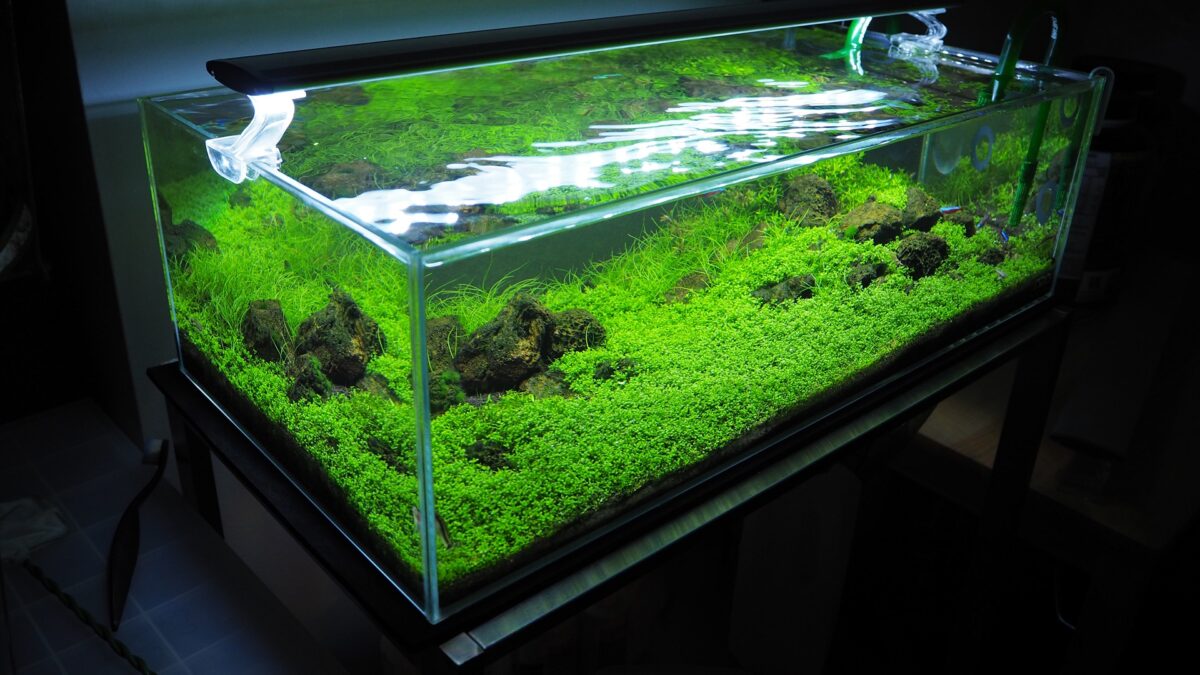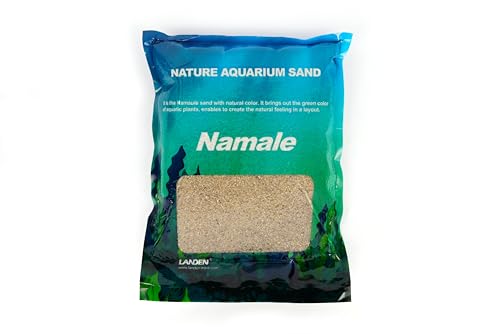Any new fish owner quickly learns that a healthy fish tank depends on more than just the fish themselves. The type of substrate in the planted tank is also crucial for the health of the fish and the plants.
The substrate is the material that you will use to fill the bottom of the tank to provide a foundation for your plants. There are many different types of substrates available, and each has its own advantages and disadvantages.
There are many different substrates available on the market, so it can be difficult to know which one is best for your tank. To help you make the best choice for your setup, we’ve compiled a list of the best substrates for planted fish tanks.
Take a quick glance at our top recommendations:

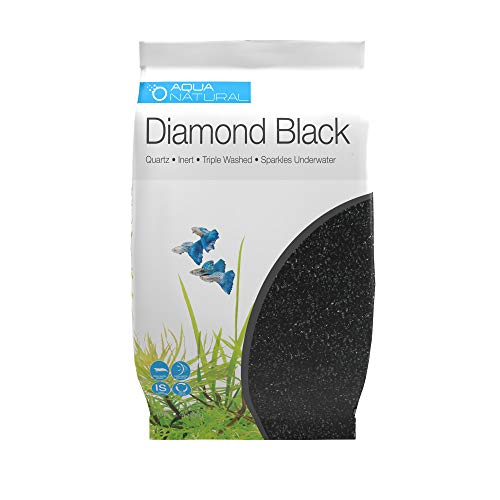




So whether you’re looking for an attractive option or one that’s easy to care for, be sure to check out our list before making your final decision.
Contents
Why Do You Need An Aquarium Substrate?

When you walk into a pet store and marvel at the rows of aquascaped tanks, one of the first things you’ll notice is the lush, underwater garden swaying with the water’s ebb and flow. Beneath that underwater wonderland lies the unsung hero—substrate. But why is having the best aquarium substrate crucial for your fishy paradise?
Soil of the Sea
Imagine your aquarium as a small-scale replica of the ocean floor. The substrate serves as the foundation, mimicking the natural habitat. It isn’t just about aesthetics; it’s the soil of your sea, providing essential nutrients and stability. If you’re interested in a garden of underwater plants, the best substrate for planted tank environments is indispensable.
Anchoring Your Aquatic Plants
You can’t just expect to drop a plant into the tank and hope it stays put. Plants need something to hold onto; they need an anchor. The best substrate for aquarium plants ensures that your vegetation stays rooted, allowing them to grow with health and vigor.
Nutrient Supply
If you’re aiming for a planted aquarium, the nutritional value of your substrate can’t be ignored. Planted aquarium substrate is usually fortified with essential nutrients like iron and magnesium. So when you’re in the market for the best planted tank substrate, look for options that promise a balanced nutrient supply.
Balancing the Ecosystem
The substrate plays a vital role in housing beneficial bacteria that contribute to the nitrogen cycle, effectively helping to balance the tank’s ecosystem. For a thriving aquatic space, a substrate for planted tank setups is more than a beautiful bed of sand or gravel; it’s a functional, living layer.
pH Levels and Filtration
Certain substrates can even assist in water filtration, absorbing harmful toxins and balancing pH levels. So, when you’re choosing the best substrate for aquarium plants, consider its potential impact on water quality as well.
Our choice for the best substrate for planted tank

You also shouldn’t miss these other top picks on this category:
- BEST Christmas GIFTS For Fish Keepers
- Best Turtle Tank Filter On The Market
- Best Fish Backgrounds For Your Aquarium
1. Winner: Fluval Plant and Shrimp Stratum

- Size: 4.4 pounds
- Color: Stratum
- Form: Granule
Pros
Made of mineral rich volcanic soil
Fluval’s Plant and Shrimp Stratum is made of mineral rich volcanic soil, which is perfect for fish and aquarium enthusiasts who want to create a healthy environment for their pets.
This type of soil is known for its ability to retain moisture and nutrients, making it an ideal substrate for plant growth. Additionally, the volcanic minerals provide essential nutrients that promote the growth of healthy plants.
Stimulates strong aquarium plant growth
Fluval’s Plant and Shrimp Stratum not only provides a healthy substrate for plant growth, but also stimulates strong growth.
The minerals in the volcanic soil help to encourage robust root development, leading to stronger and healthier plants.
This is an essential factor for fish and aquarium enthusiasts who want to create a thriving environment for their pets.
Promotes neutral to mildly acidic pH
Fluval’s Plant and Shrimp Stratum is perfect for those who want to create a neutral to mildly acidic pH environment for their fish and aquarium plants.
This is because the volcanic soil naturally has a slightly acidic pH, which helps to promote healthy plant growth.
Additionally, the minerals in the soil help to buffer against sudden changes in pH, making it easier to maintain a stable environment for your pets.
Do not cause discoloration in the tank water
Fluval’s Plant and Shrimp Stratum will not cause discoloration in the tank water, making it perfect for those who want to maintain a clean and healthy environment for their fish and aquarium plants.
This is because the volcanic soil naturally filters out impurities and toxins, keeping the water clean and clear.
Additionally, the minerals in the soil help to buffer against sudden changes in pH, making it easier to maintain a stable environment for your pets.
Cons
Not suitable for sponge filter.
If you’re using a sponge filter in your aquarium, this product is not for you. The coarse material can clog up your filter, leading to poorer water quality and potentially harming your fish.
Takes time to rinse.
This substrate takes a bit more time to rinse than some other options on the market. This is because of the smaller particle size, which can result in cloudiness if not rinsed properly.
- Facilitates Rapid and Beneficial Colonization: Its porous structure enables swift colonization of beneficial nitrifying organisms, fostering a healthy aquatic environment crucial for the well-being of aquarium inhabitants
- Maintains Optimal pH Levels: Designed to sustain a neutral to slightly acidic pH range, ideal for supporting the growth of various plants, tropical fish, and shrimp commonly found in planted aquarium setups
- Offers Shelter for Newborn Shrimp: Stratum provides a safe haven for newborn shrimp, offering protection from potential predators until they reach a size where emerging into the main aquarium is viable
2. Runner Up: Seachem Flourite Black Clay Gravel
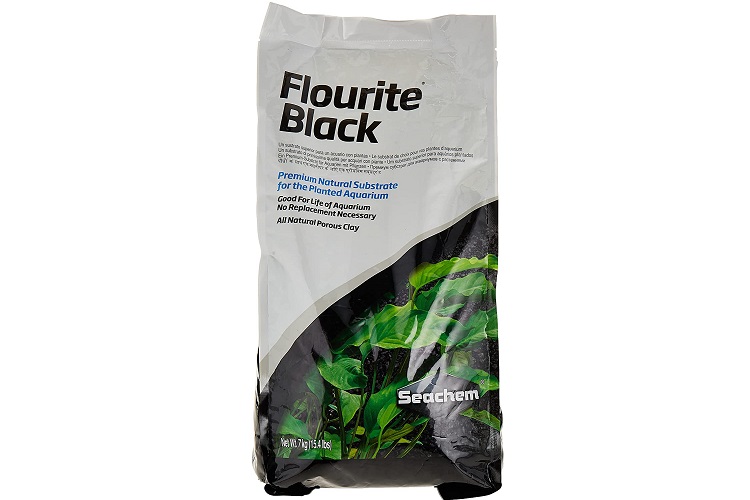
- Size: 15.4 pounds
- Color: Black
- Form: Clay Gravel
Pros
Specially fracted stable porous clay gravel for the natural planted aquarium
Specially crafted, stable porous clay gravel for the natural planted aquarium is perfect for fish enthusiasts looking to create a beautiful and healthy environment for their fish.
This gravel provides a great foundation for plant growth and helps to keep the water clean and clear. Plus, it’s safe for all types of fish and aquatic creatures.
Not chemically treated
Seachem Flourite Black Clay Gravel is not chemically treated, and your aquatic creatures will remain safe and healthy because it does not alter the pH of the water.
It is a light, non-compacting, porous structure
This type of soil is known for its ability to retain moisture and nutrients, making it an ideal substrate for plant growth.
Additionally, the porosity of the soil helps to promote healthy root development, leading to stronger and healthier plants.
Cons
May become dusty in transit
It is important to note that it can become dusty in transit and may require rinsing before use to remove any residual dust.
While this may not be a big deal for some, it is something to keep in mind as it will require some of your time to rinse it.
- GRAVEL: Seachem Flourite Black is a specially fracted stable porous clay gravel for the natural planted aquarium. Its appearance is best suited to planted aquaria, but may be used in any freshwater aquarium environment.
- AQUARIUM BED: Gravel modifiers such as laterite are not necessary when using Seachem Flourite Black as this product is most effective when used alone as an integral substrate bed, but it may be mixed with other gravels.
- SET-UP: When adding water to the aquarium, fill slowly to avoid disturbing Flourite Black substrate bed. Place a bowl in the aquarium and add water directly to the bowl, allowing water to overflow softly on to the gravel bed. Initial cloudiness is normal, but to remove this simply use mechanical filtration
3. Best Value for Money: Landen Aqua Soil Substrate for Natural Planted Aquarium
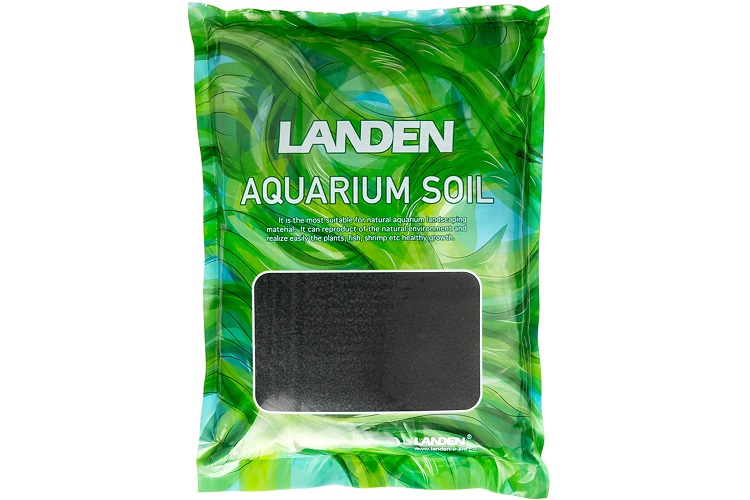
- Size: 10 pounds
- Color: Black
- Form: Clay Gravel
Pros
Made from processed natural materials of the Earth
The Landen Aqua Soil Substrate for Natural Planted Aquarium is made from specially processed natural material from the earth.
This substrate is perfect for creating a natural environment for your fish and plants. It promotes plant growth and provides a healthy root system for your aquatic plants. It is also safe for all aquarium creatures.
Rich in nitrogen nutrients and organic acids
These nutrients are essential for the growth of aquatic plants. The substrate also provides a healthy root system for your fish and plants.
Can reproduce mildly acidic water tank condition
The Landen Aqua Soil Substrate can reproduce the mildly acidic water condition most aquatic plants prefer.
This substrate will make your plant look more attractive and will create a healthy environment for your fish at the same time.
Needs at least 1 week waiting period to stabilize
If you’re planning on adding fish or shrimp to your aquarium, you’ll need to wait at least a week after setting up your filtering system.
This waiting period is necessary to allow the filter to become established and stable enough to support a fully-cycled tank. By following this, your fish and shrimp won’t be at risk of having illness or even death.
- 【Made by Nature】Made from specially processed natural material from the earth, Ideal natural planted aquarium substrate for most aquatic plants, provides healthy plant root system and for shrimps requiring softer water.
- 【For Healthy System】Developed for cultivation of aquatics plants and is also suitable substrate for shrimps. It provides fundamental minerals and trace elements, rich in organic acids and nitrogen nutrients, which promote the health and growth of shrimps straturm.
- 【 High-Quality Effect】Its porous structure creates an attractive and stable breeding ground for beneficial bacteria that keep your aquarium water clean. This product can reproduce the mildly acidic water conditions most aquatic plants prefer and can also extend and slow the release of the fertilizer needed for aquatic plants. Note: For stable ammonia levels, frequent partial water changes are advised in the first two weeks. Water conditions generally stabilize after one week.
4. Best High-End: Landen Namale Aquarium Sand
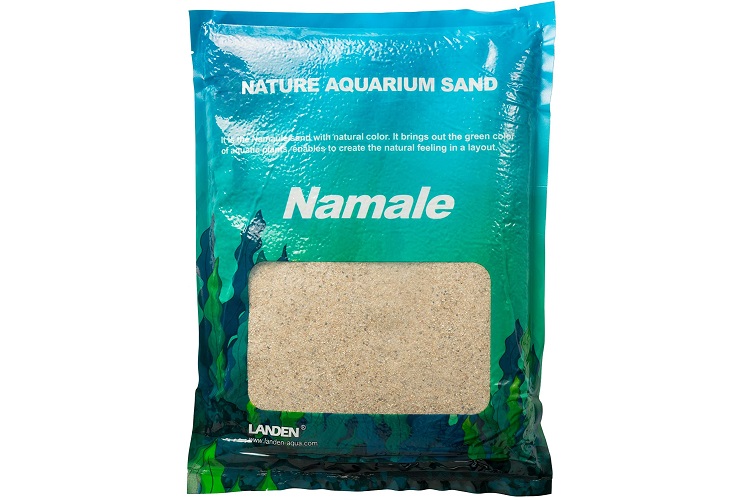
- Size: 11 pounds
- Color: Wheat
- Form: Sand
Pros
Natural landscaping that makes your aquarium look more attractive
If you’re looking to add some natural beauty to your aquarium, look no further than Landen Namale Aquarium Sand.
This sand is perfect for creating a make-shift landscape for your aquatic plants. Not only will it provide a beautiful backdrop for your fish, but it also contains all the nutrients necessary for healthy plant growth.
Strong absorption
This sand has strong adsorption performance, meaning it will help remove impurities from your water.
It also contains all the nutrients necessary for healthy plant growth, so your fish will be able to thrive in a healthy environment.
Natural and safe to use
This sand is made from pure natural materials and has a moderate pH value, making it suitable for both fresh and saltwater.
It contains no harmful substances that could potentially harm your fish or plants, so you can rest assured knowing that your aquarium is safe for all aquatic organisms.
Cons
Requires extensive rinsing prior to use
While Landen Namale Aquarium Sand is a great option for those looking to add beauty and health to their aquarium, it does require extensive rinsing prior to use.
However, if you take the time to properly rinse it before use, you’ll be rewarded with a healthy and beautiful aquarium for your fish.
- 【Natural Landscaping】 Landen Namale Aquarium Sand is a natural product used as a general aquarium fish tank sand and a make-up sand for aquatic plant landscaping. With a gentle and natural color, it is available for different landscaping designs, applicable in a variety of ways; It can highlight the form and color of landscaping and show the supernatural style of the riverbed
- 【Enhancing Water Quality】 It has strong adsorption performance and purifies the water quality of the aquatic ecosystem. It is suitable for amphibians, reptiles, and other aquatic pets and organisms (such as salamanders, newts, turtles, frogs, freshwater fish, black water organisms, etc.).
- 【Natural and Safe】 Pure natural products, moderate pH value, suitable fresh water and seawater, no use of dyes or paints, no impact on water quality, no release of any harmful substances harmful to fish and aquatic plants, are safe to use for all aquatic organisms.
5. Best Budget Pick: Ultum Nature Systems Controsoil
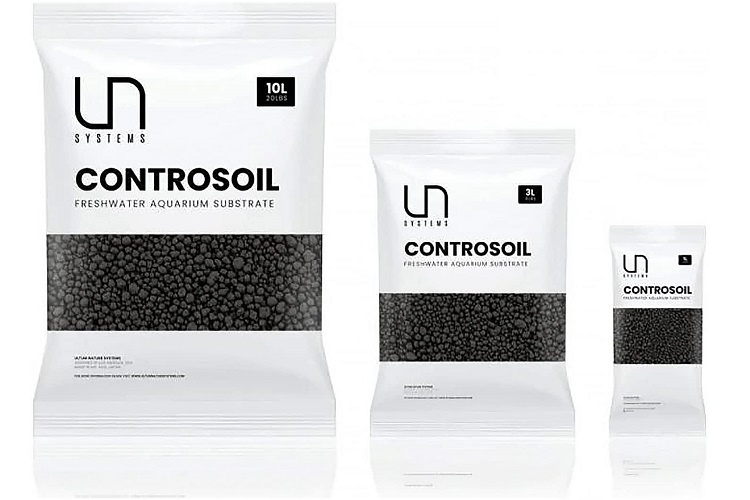
- Size: 6 pounds
- Color: Black
- Form: Clay Gravel
Pros
Optimal Oxygen exchange
Ultum Nature Systems’ Controsoil provides optimal oxygen exchange and rich nutrients for fish and aquarium enthusiasts. Controsoil also helps to regulate pH levels and prevent algae growth.
Suitable for most freshwater fish
Ultum Nature Systems’ Controsoil is also suitable for all freshwater inhabitants that prefer slightly acidic aquarium water. This makes it an ideal substrate for fish that are sensitive to changes in pH levels.
Releases low levels of ammonia
Ultum Nature Systems’ Controsoil has a low ammonia release, making it safe for use in aquariums with sensitive fish.
Lowers water hardness
Ultum Nature Systems’ Controsoil lowers total water hardness for a better aquatic plant nutrient consumption environment.
Cons
Not suitable for goldfish
While Ultum Nature Systems’ Controsoil is suitable for most freshwater fish, it is not recommended for goldfish.
This is because goldfish are more sensitive to changes in water parameters and may experience stress or health problems in an environment that is not stable.
- Designed For Planted Aquariums – Granule composition and sizes provide optimal oxygen exchange and rich nutrients for aquatic plants
- Optimal For Fish And Shrimp – Suitable for all freshwater inhabitants such as tropical fish and shrimp that prefer slightly acidic aquarium water
- Low Ammonia Release – Promotes and accelerates beneficial bacteria growth
6. Alternative 1: Aqueon Plant and Shrimp Aquarium Substrate
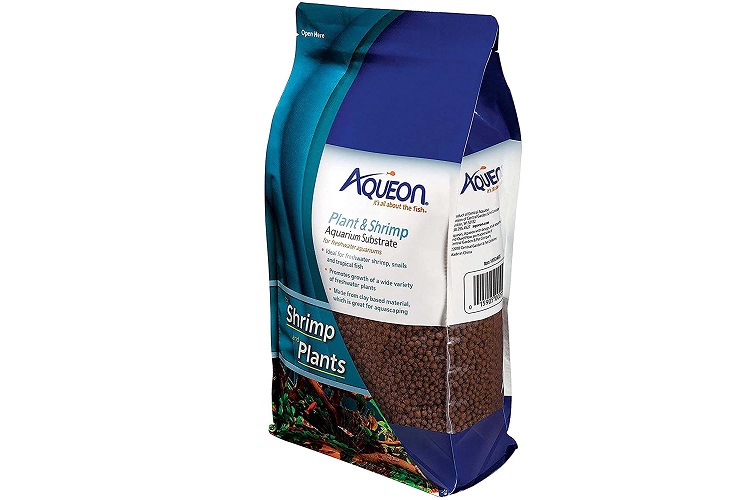
- Size: 5 pounds
- Color: Brown
- Form: Clay
Pros
Can accommodate a variety of freshwater inhabitant
If you’re looking for an aquarium substrate that can accommodate a variety of freshwater plants, shrimp, snails and tropical fish, then Aqueon Plant and Shrimp Aquarium Substrate is a great option.
This substrate is made of natural clay and provides nutrients and anchoring options for plant roots. It also includes beneficial bacteria to help establish a balanced aquarium environment.
Unique spherical shape
Aqueon Plant and Shrimp Aquarium Substrate’s unique spherical shape maintains its form over time and doesn’t break down into compressed soil.
This makes it an ideal substrate for plants and shrimp that require a loose, non-compacted environment. Its shape also allows newly budding and mature plants’ root systems to grow and flourish.
Cons
Takes time to clean, rinse, and vacuum
it should be noted that this substrate does take some time to clean, rinse, and vacuum. This is because the clay particles can become difficult to remove over time.
- Available in 5-pound bag
- Great option for a variety of freshwater plants, shrimp, snails and tropical fish
- Promotes growth of a wide variety of freshwater plants
7. Alternative 2: AquaNatural Diamond Black Premium Gravel and Substrate
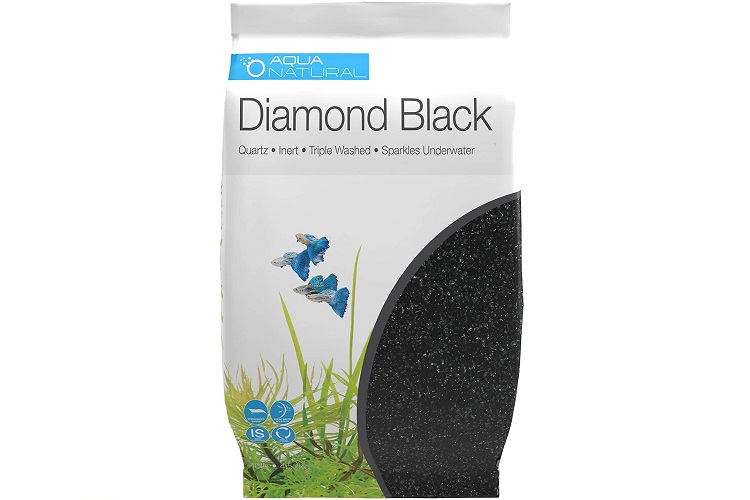
- Size: 10 pounds
- Color: Black
- Form: Gravel
Pros
100% natural materials
AquaNatural Diamond Black Premium Gravel and Substrate is safe for your aquarium.
The 100% natural material is not harmful to your fish or plants. This product is also ideal for use in freshwater, saltwater, and reef tanks.
Promotes growth of good bacteria
This substrate promotes good bacteria growth because of its large surface area. Its large surface area provides more space for beneficial bacteria to grow.
This product also contains essential minerals that are necessary for the growth of healthy bacteria.
Helps remove toxins from water
AquaNatural Diamond Black Premium Gravel and Substrate helps to remove toxins from the water.
Its large surface area also provides more contact with the water, which helps to remove toxins more effectively. This product is also effective in removing organic waste and other pollutants from the water.
Contrasts well with the plants
With its dark color, AquaNatural Diamond Black Premium Gravel and Substrate will give your aquarium a natural and inviting look.
The contrast of the dark gravel with the green of the plants like anubias and amazon swords will create a beautiful and serene environment for your fish.
Cons
Requires extensive rinsing
AquaNatural Diamond Black Premium Gravel and Substrate requires extensive rinsing before use.
This gravel is very fine so it can easily cloud the water if not rinsed properly. Rinsing the gravel thoroughly will remove any impurities that could harm your fish or plants.
- Aquarium Safe – 100% natural
- Promotes good bacteria growth because of its large surface area
- Contrasts well with a planted tank
Factors to consider in choosing the substrate for your planted tank

1. The type of fish and plants you are keeping
The type of fish and plants you are keeping should be a major consideration in your decision-making process.
For example, if you are keeping plants that require a lot of nutrients, you will need to choose a substrate that contains nutrient-rich soil or pellets.
Bottom-dwelling fish will stir up the gravel and sand, so you’ll need a deeper layer to prevent them from being exposed.
By taking the time to research your options, you can ensure that your fish and plants thrive in their new home.
2. The size of your aquarium
In general, larger aquariums will require more substrate than a smaller one. Larger tanks require a deeper layer of substrate in order to provide adequate coverage.
For example, a 10-gallon tank might only need a layer of substrate that is 3 inches deep, while a 75-gallon tank would need a layer that is at least 6 inches deep.
3. The price of the substrate
While it may be tempting to purchase the cheapest option, this could be a mistake in the long run. In general, higher-quality substrates tend to last longer and provide better support for plant life.
As a result, they can actually save you money in the long run by reducing the need for frequent replacements.
When shopping for a new substrate, be sure to consider not only the initial price, but also the long-term costs of maintenance and replacement.
4. The maintenance requirements of the substrate

Some substrates require more frequent vacuuming and water changes than others. As a result, it’s important to choose a substrate that you’re willing and able to maintain properly.
Substrate for planted tanks FAQs
Do you need a special substrate for aquarium plants?
Yes, you need a special substrate for aquarium plants. Here are five reasons why:
- Aquarium plant substrates are very porous, which allows them to anchor plant roots securely while also providing plenty of aeration. This is important because roots need access to oxygen in order to stay healthy.
- Substrates typically have a higher pH than regular fish tank gravel, which is beneficial for most live plants.
- Theyusually contain trace elements and minerals that are essential for plant growth but not found in regular fish tank gravel.
- Aquarium plant substrates can be customized to provide the specific combination of nutrients that your plants need.
- Substrates are often much lighter than regular gravel, making them easier to work with and less likely to impact the overall balance of your aquarium.
Is sand or gravel better for a planted aquarium?
Sand and gravel are two of the most popular forms of substrate and they both have their pros and cons.
Sand is more natural-looking and can help to create a serene underwater landscape. It can also be easier to plant in because the roots can more easily penetrate the sand.
If you plan to keep fish that like to burrow, sand might be the better option. However, sand is also more likely to become compacted over time, which can lead to problems with water circulation.
Gravel, on the other hand, is less likely to compact and can provide better drainage.
It also comes in a wide variety of colors and sizes, so you can easily find an option that compliments your aquarium décor. If you are after an easy-to-care-for aquarium, gravel might be the way to go.
The best substrate for your aquarium depends on your personal preferences and the needs of your plants.
Conclusion
Aquarium substrates are an important part of your tank set up. They provide many benefits for both you and your fish.
By understanding the different types of substrates available and how to choose the best one for your tank, you can create a healthy and beautiful environment for your aquatic friends.
We hope this article has helped you understand the different types of substrates available and how to choose the best one for your plants and aquarium.

Ian Sterling, founder of Fishlab.com, began his aquarium journey over 30 years ago, driven by a deep fascination for fish and their diverse personalities. His website, Fishlab.com, is dedicated to making fishkeeping accessible and enjoyable, offering beginner-friendly guidance, expert insights, and a community for aquarists to connect and share experiences.


